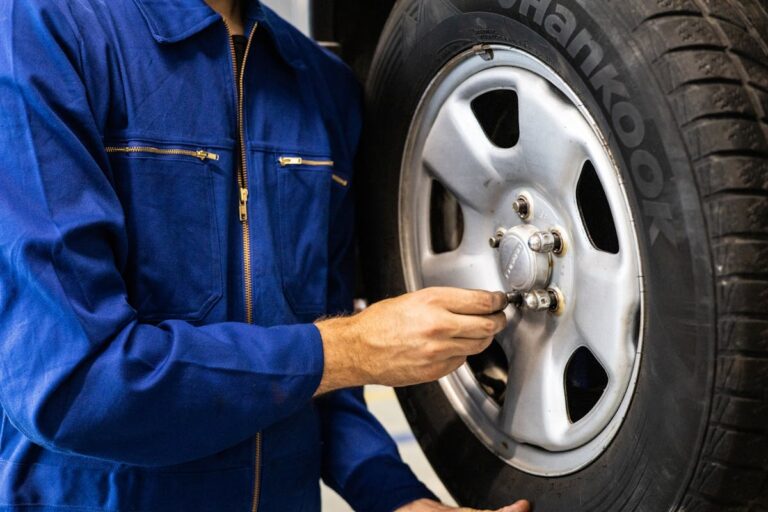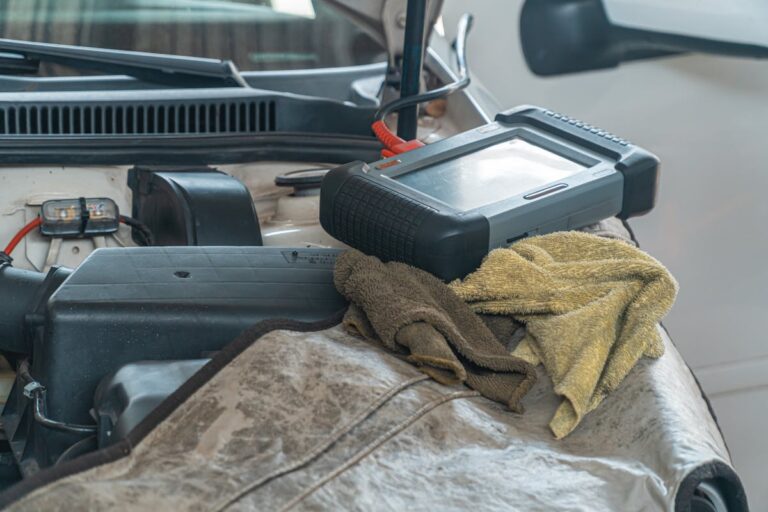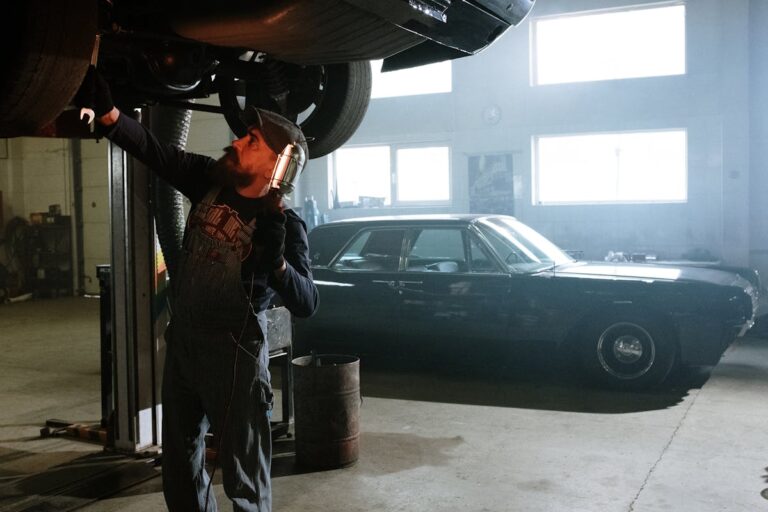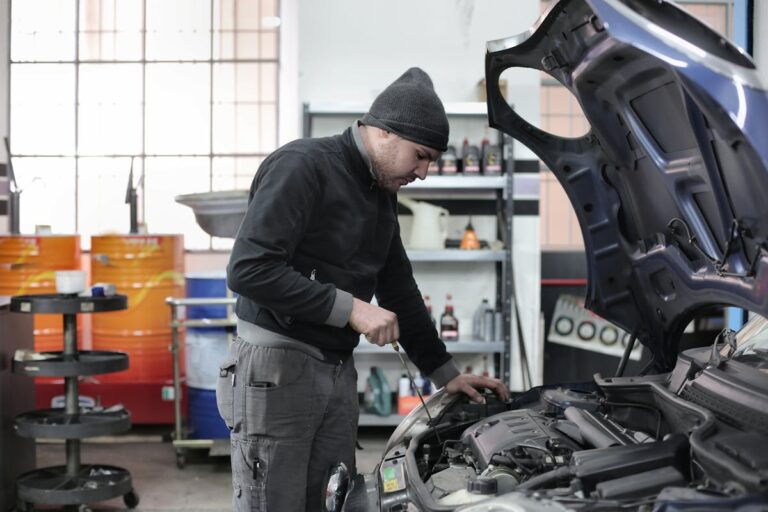As a driver, understanding the signs of potential brake problems is not only essential for the longevity of your vehicle, but also for your safety and those around you. Symptoms such as unusual noises, altered brake pedal behavior, pulling to one side, vibrations, or longer stopping distances, are all early indicators of potential brake system issues. Neglecting these signs can lead to serious consequences and costly repairs. Consequently, regular maintenance and vigilance are paramount. But how can you discern between normal wear and a serious issue? Let’s explore these signs in depth to guarantee a safer driving experience.
Recognizing Unusual Noises
One of the most common indicators of brake problems is the presence of unusual noises. These noises can originate from various components of the braking system, primarily the brake pad and brake rotor.
An essential element to take into account is the brake pad. Over time, due to the friction generated during braking, these pads can wear down. In such cases, a high-pitched squealing noise is produced. This sound is typically a clear indication that the brake pad material is considerably reduced and needs immediate replacement. Ignoring this noise could lead to more severe problems, as the wear can eventually reach the metal backing plate, causing damage to the brake rotor.
The brake rotor, an equally important component, can also produce unusual noises when not functioning at its best. A worn or warped rotor may generate a grinding sound during braking. This noise indicates that the rotor’s surface is uneven, leading to inefficient braking and potential safety hazards.
Recognizing these unusual noises and understanding their origin requires technical knowledge and expertise. Prompt attention to these signs can prevent further damage, ensuring the longevity and safety of the braking system.
Observing Changes in Brake Pedal
Changes in the brake pedal’s behavior can also indicate potential problems within the braking system. One of the most common signs of a potential issue is a change in pedal travel, the distance the brake pedal moves when pressed.
In a normal functioning braking system, the brake pedal should offer some resistance, yet depress smoothly when applied. Excessive pedal travel, where the brake pedal goes closer to the floor than usual, may indicate a problem with the hydraulic system, such as a leak in the brake lines or an issue with the master cylinder.
Conversely, a stiff brake pedal that doesn’t depress easily could hint at blockages within the brake lines, or an issue with the brake booster. Vacuum leaks or failing booster check valves can cause this symptom.
Additionally, a pulsating or vibrating brake pedal may signal warped rotors or uneven brake pad wear. Pedal vibrations can also stem from maladjusted brake calipers.
In any case, any noticeable changes in the brake pedal’s behavior warrant immediate attention. Regular inspection and maintenance, coupled with prompt response to irregularities, can prevent potential brake failures and guarantee vehicular safety.
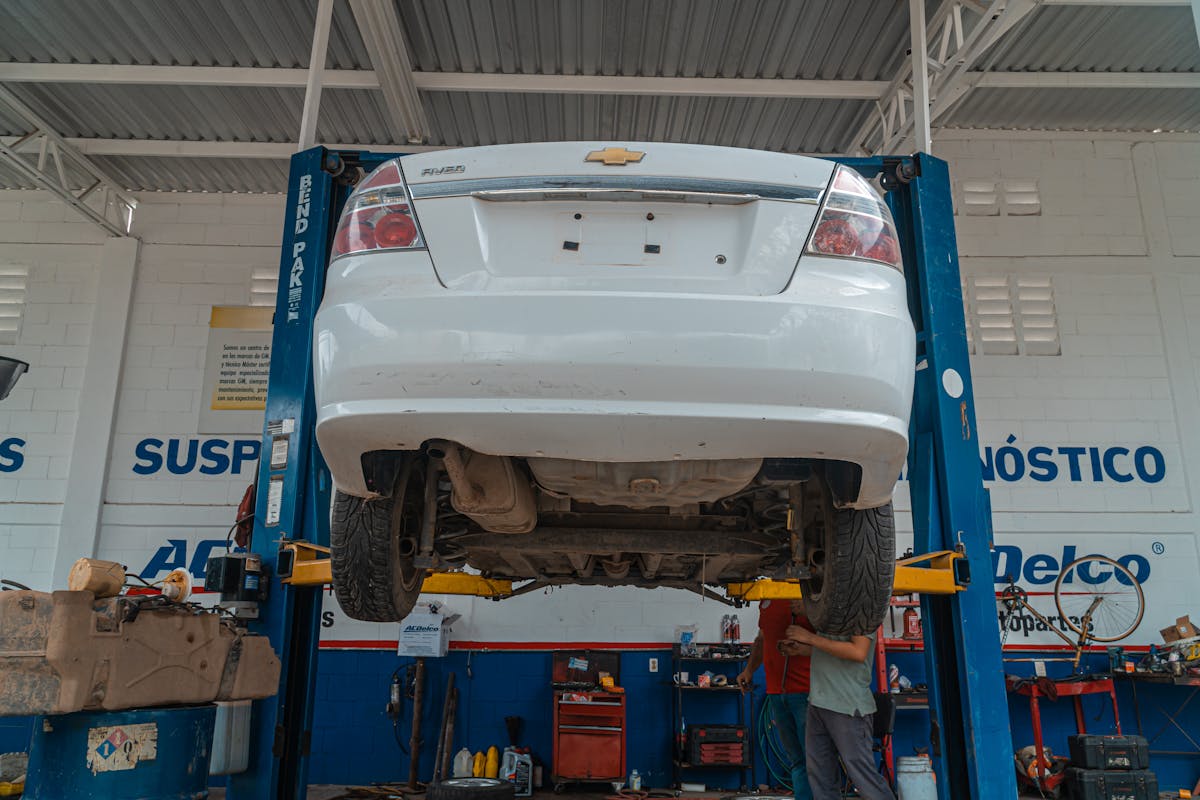
Noticing Car Pulling to One Side
When driving, if you notice your vehicle tending to drift or pull towards one side without any steering input, this could be indicative of an underlying brake issue. This deviation from the intended path can be attributed to brake alignment issues or uneven tire wear, both of which could stem from problems with the braking system.
Brake alignment issues, for instance, are a common cause of a vehicle pulling to one side. It occurs when the brake calipers exert unequal pressure on the rotor. This misalignment can result in the car veering towards the side with the stronger brake force during operation, leading to a perceptible pull.
Uneven tire wear, on the other hand, may be a sign that the brakes are not engaging and releasing correctly. If the wear is more pronounced on one side, it may cause the vehicle to drift in that direction due to the discrepancy in grip between the tires.
In both cases, the root cause can often be traced back to the braking system. Consequently, if you observe your vehicle pulling to one side, it is advisable to seek professional assistance to diagnose and rectify the issue promptly, ensuring your vehicle’s safety and performance.
Detecting Vibration During Braking
Shifting gears from the symptom of your vehicle pulling to one side, another significant signal of potential brake problems is the sensation of vibration during braking. This phenomenon often indicates a mechanical issue that requires immediate attention. Regular brake maintenance can often prevent such problems, but neglect can lead to a myriad of vibration causes.
- Warped brake rotors: These components are subjected to immense heat and pressure. Over time, they can warp, causing the brake pads to vibrate as they struggle to grip the uneven surface.
- Worn out brake pads: Extended usage wears down brake pads, causing them to vibrate or squeak during application. Replacement is necessary to restore braking efficiency.
- Loose or damaged components: Any component within the brake system, if loose or damaged, can lead to vibration. Regular inspection is essential.
- Tire issues: Irregular tire wear or imbalance can also cause vibration during braking, indicating the need for tire replacement or realignment.
Each of these issues underscores the importance of regular brake maintenance to guarantee your vehicle’s safety. Ignoring vibrations during braking can lead to worsening conditions and potential brake failure.
Understanding Warning Lights
Focusing now on “Understanding Warning Lights”, it’s essential to grasp the significance of these indicators in your vehicle’s health. Interpretation of brake warning lights, typically red or yellow signals on your dashboard, requires an understanding of their varied causes. From worn-out brake pads to hydraulic system issues, these illuminations are designed to alert drivers to potential brake malfunctions that require immediate attention.
Interpreting Brake Warning Lights
In the domain of automotive diagnostics, understanding the purpose and meaning of brake warning lights is vital. These lights are a significant component of brake maintenance and are designed to alert the driver to potential issues that might compromise the safety and functionality of the vehicle.
The process of warning light interpretation involves understanding what each light signifies. Here are four common brake warning lights:
- Brake System Alert: This light, typically represented by an exclamation mark inside a circle, signals an overall issue with the brake system.
- ABS Warning Light: The Anti-lock Braking System light indicates a malfunction within the ABS, which could affect the car’s ability to stop quickly.
- Brake Fluid Warning Light: This light warns of low brake fluid levels, which are essential for proper brake function.
- Brake Pad Warning Light: This light typically signifies worn-out brake pads, requiring immediate attention.
In-depth knowledge of these lights can facilitate timely brake maintenance and guarantee the longevity of your vehicle. Ignoring these warnings can lead to more serious, costly repairs, and potentially endanger the vehicle’s passengers. Consequently, prompt interpretation and action are key to maintaining a safe and functional braking system.
Causes of Warning Lights
Building on our understanding of brake warning lights, it is equally important to comprehend the underlying causes that trigger these alerts. A common cause of warning lights is a decrease in brake fluid levels. This fluid is instrumental in the hydraulic system that powers your brakes. A drop in its level can compromise brake performance and consequently safety.
When this happens, the brake system detects the fluid discrepancy and triggers the warning symbols on your dash. Another key cause of brake warnings is wear or damage to brake components. For instance, worn-out brake pads can activate a brake warning light. Furthermore, a failure in the anti-lock brake system (ABS) can also trigger a warning symbol.
In some cases, a fault in the electronic components linked to the brake systems can cause false warnings. This can be due to damaged wiring or faulty sensors. Regardless of the cause, it is essential to take any brake warning seriously. Ignoring these alerts can lead to severe brake failure, which can result in dangerous driving conditions. Always consult with a professional to diagnose and resolve any brake warnings promptly.
Experiencing Longer Stopping Distances
An alarming indication of potential brake issues is the experience of longer stopping distances. This could be a symptom of a number of underlying problems, including brake fade, worn brake pads, or issues with the hydraulic system.
Brake fade is an occurrence that reduces the stopping power of your vehicle. It involves a temporary loss or complete reduction of a vehicle’s braking power, which can be caused by overheating. This situation can become particularly dangerous in certain road conditions, such as downhill slopes or when towing heavy loads.
In terms of understanding the risks associated with longer stopping distances, consider the below points:
- Longer stopping distances increase the risk of rear-end collisions. As the time to stop increases, the vehicle behind may not have sufficient time to react, leading to potential accidents.
- A brake system experiencing fade can lead to complete brake failure, causing a catastrophic event.
- The danger is heightened in adverse road conditions, such as wet or icy surfaces, where stopping distances naturally increase.
- Increased stopping distances can cause a false sense of security, leading to risky driving behaviors.
Being aware of these risks emphasizes the importance of regular brake inspections and maintenance.
Spotting Leaking Fluids Under Car
A surprising number of drivers may overlook the significance of spotting leaking fluids under their car, dismissing it as a minor issue. However, this can be a critical sign of potential brake problems. Leaking brake fluid is a serious concern as it plays a pivotal role in your car’s braking system. It is the medium that transfers force into pressure, amplifying braking force.
It is essential to identify the leak sources and address them promptly. Brake fluid is typically clear to yellowish and feels slightly oily. A puddle of such fluid under your car is an immediate red flag. The leak sources could range from a compromised master cylinder, worn brake lines, to leaking wheel cylinders or calipers.
Frequently Asked Questions
What Is the Average Lifespan of Brake Pads?
The lifespan of brake pads greatly depends on their material and usage. Generally, most brake pad materials last between 30,000 to 70,000 miles. However, regular inspections are essential for detecting early signs of brake pad wear.
How Much Does It Typically Cost to Replace Brake Pads?
The cost to replace brake pads varies depending on brake pad types and replacement frequency. On average, it ranges from $100 to $300 per axle. High-performance pads or dealership services can increase this cost considerably.
Can Worn Tires Affect the Efficiency of the Brakes?
Yes, worn tires can considerably affect brake efficiency. Lower tire tread reduces traction, potentially increasing braking distance. Regularly monitoring and maintaining tire condition is thus essential for ideal brake performance and overall vehicle safety.
How Does Weather or Climate Impact Brake Performance?
Weather and climate can greatly impact brake performance. Changes in temperature affect brake fluid viscosity, potentially causing braking inefficiency. Cold climates can thicken fluid, while extreme heat can lead to brake fluid boiling and vaporization.
What Regular Maintenance Tasks Can Help Prolong Brake Life?
Regular maintenance tasks to prolong brake life include frequent inspection intervals, timely replacement of brake fluid, ensuring ideal tyre pressure, and proper driving habits. These tasks help maintain brake efficiency and extend their service life.


